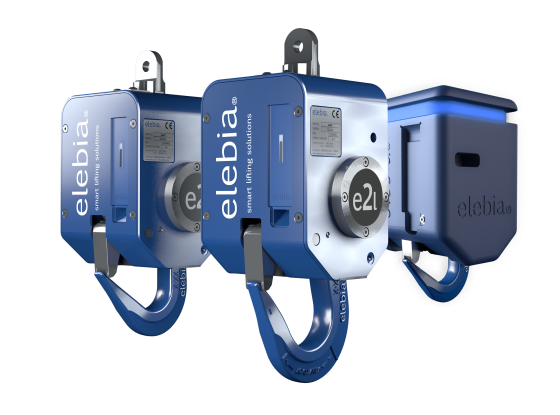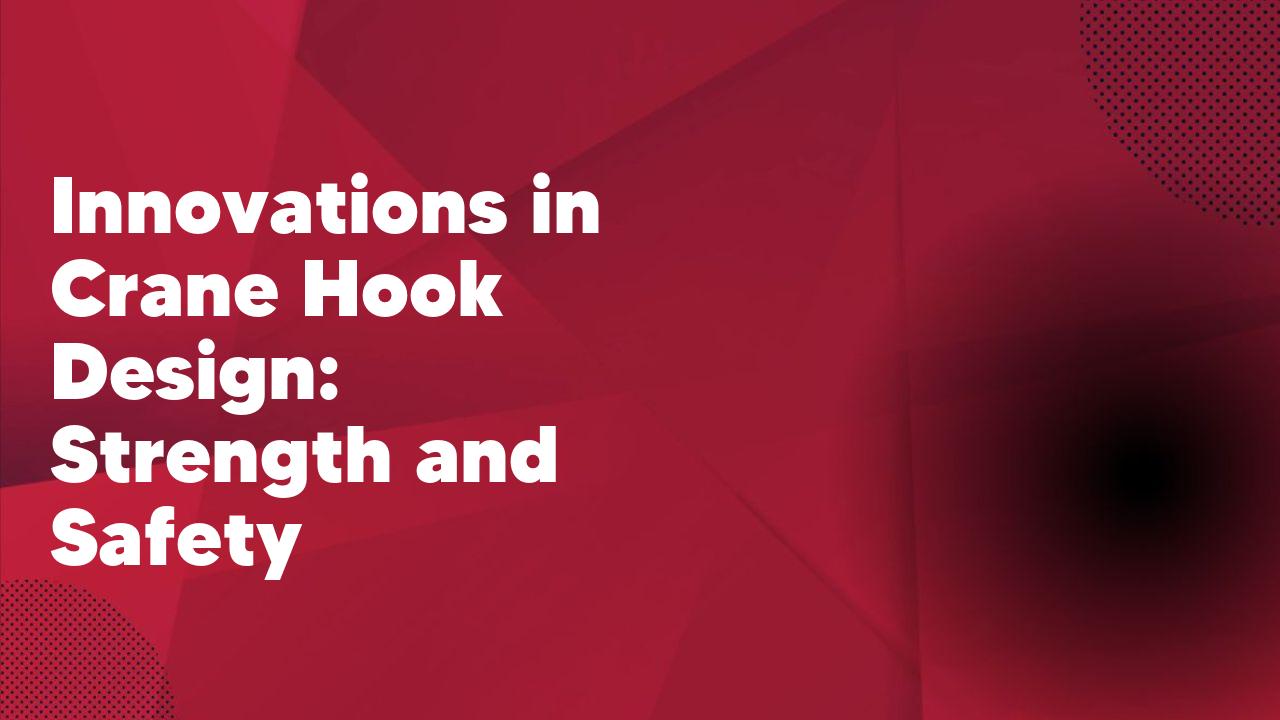Crane hook design has come a long way in recent years, with advancements in technology and materials allowing for stronger and safer hooks. These innovations have not only increased the lifting capacity of cranes, but also improved the overall safety of operations. In this article, we will explore some of the latest developments in crane hook design and their impact on strength and safety.
Introduction to Crane Hook Design: Enhancing Strength and Safety
Crane hook design plays a crucial role in enhancing both the strength and safety of cranes. The hook is the primary component responsible for lifting heavy loads, and its design directly impacts the overall performance and reliability of the crane. To ensure maximum strength, crane hooks are typically made from high-quality materials such as alloy steel, which can withstand immense pressure and stress. Additionally, the design of the hook includes various factors such as the shape, size, and angle, which are carefully considered to optimize its lifting capacity and prevent any potential failures or accidents. By focusing on enhancing the strength and safety of crane hooks, the overall efficiency and effectiveness of cranes can be significantly improved, leading to safer and more productive operations.
Advancements in Material Technology for Crane Hooks: Ensuring Maximum Strength

In recent years, there have been significant advancements in material technology for crane hooks, ensuring maximum strength and safety. The use of high-strength alloys and advanced manufacturing techniques has allowed for the development of hooks that can withstand heavy loads and extreme conditions. These new materials offer improved durability and resistance to wear and tear, reducing the risk of hook failure and accidents. Additionally, the use of advanced materials has allowed for the design of hooks that are lighter in weight, increasing efficiency and reducing energy consumption. Overall, these advancements in material technology have greatly enhanced the performance and safety of crane hooks in various industries.
Innovative Safety Features in Crane Hook Design: Protecting Workers and Equipment
Crane hooks are an essential component of lifting equipment, but they can also pose significant safety risks if not designed properly. To address this issue, manufacturers have been incorporating innovative safety features into crane hook designs. One such feature is the use of load indicators, which provide real-time information about the weight being lifted. This helps operators ensure that they are not exceeding the crane’s capacity, preventing accidents and equipment damage. Additionally, some crane hooks now come equipped with anti-slip coatings or materials to enhance grip and prevent slippage during lifting operations. These safety features are crucial in protecting both workers and equipment, reducing the risk of accidents and improving overall workplace safety.
Ergonomic Design in Crane Hooks: Enhancing Operator Comfort and Efficiency
Ergonomic design in crane hooks is crucial for enhancing operator comfort and efficiency. Crane operators often have to work long hours in challenging conditions, and a poorly designed crane hook can lead to discomfort and fatigue. By incorporating ergonomic features such as padded handles and adjustable grips, crane hooks can provide a more comfortable and secure grip for operators. Additionally, the design of the hook itself can be optimized to reduce strain on the operator’s hand and wrist. This not only improves operator comfort but also enhances efficiency by reducing the risk of accidents and increasing productivity. Overall, ergonomic design in crane hooks is essential for creating a safer and more efficient working environment for crane operators.
Cutting-Edge Load Monitoring Systems for Crane Hooks: Ensuring Safe Lifting Operations
In the world of heavy lifting operations, safety is of utmost importance. That’s why cutting-edge load monitoring systems for crane hooks have become essential tools for ensuring safe lifting operations. These advanced systems are designed to accurately measure and monitor the load being lifted, providing real-time data to operators. By constantly monitoring the load, these systems can detect any potential overload situations, allowing operators to take immediate action to prevent accidents. Additionally, these systems can provide valuable data for analysis and optimization of lifting operations, helping to improve efficiency and reduce downtime. With the use of cutting-edge load monitoring systems, crane operators can have peace of mind knowing that they are equipped with the latest technology to ensure safe and efficient lifting operations.
Future Trends in Crane Hook Design: Exploring New Possibilities for Strength and Safety
In recent years, there has been a growing focus on improving the design of crane hooks to enhance both strength and safety. With advancements in technology and materials, engineers are exploring new possibilities to create hooks that can withstand higher loads and provide increased reliability. One trend that is gaining traction is the use of advanced alloys and composites, which offer superior strength-to-weight ratios compared to traditional materials. Additionally, there is a push towards incorporating smart technologies into crane hooks, such as sensors and monitoring systems, to detect potential failures and ensure timely maintenance. These innovations are aimed at reducing the risk of accidents and improving overall efficiency in crane operations.
Conclusion
In conclusion, innovations in crane hook design have greatly improved both the strength and safety of these essential lifting tools. The use of advanced materials and engineering techniques has allowed for hooks that can withstand higher loads and stresses without compromising on safety. These advancements have not only increased productivity and efficiency in industries that rely on cranes, but have also significantly reduced the risk of accidents and injuries.
What are some recent innovations in crane hook design?
Some recent innovations in crane hook design include the use of high-strength materials, such as alloy steel, to increase the hook’s load capacity. Additionally, there have been advancements in hook design to improve safety features, such as anti-slip coatings and latch mechanisms.
How do high-strength materials improve crane hook design?
High-strength materials, such as alloy steel, have a higher tensile strength and yield strength compared to traditional materials. This allows crane hooks to handle heavier loads without deformation or failure, increasing their overall strength and load capacity.
What safety features are commonly found in modern crane hooks?
Modern crane hooks often incorporate safety features such as anti-slip coatings on the contact surfaces to prevent load slippage. They may also have latch mechanisms that securely hold the load in place, reducing the risk of accidental release during lifting operations.
How do anti-slip coatings improve crane hook safety?
Anti-slip coatings provide a textured surface on the contact areas of the crane hook, increasing friction between the hook and the load. This helps to prevent load slippage, ensuring a more secure lifting operation and reducing the risk of accidents or damage.
What are the benefits of using latch mechanisms in crane hooks?
Latch mechanisms in crane hooks provide an additional layer of safety by securely holding the load in place. They prevent accidental release during lifting operations, reducing the risk of injuries or damage to the load and surrounding equipment.
Are there any regulations or standards for crane hook design?
Yes, there are regulations and standards that govern crane hook design. These standards, such as those set by organizations like the American Society of Mechanical Engineers (ASME), outline requirements for factors such as load capacity, materials, and safety features to ensure the safe and efficient operation of cranes.

